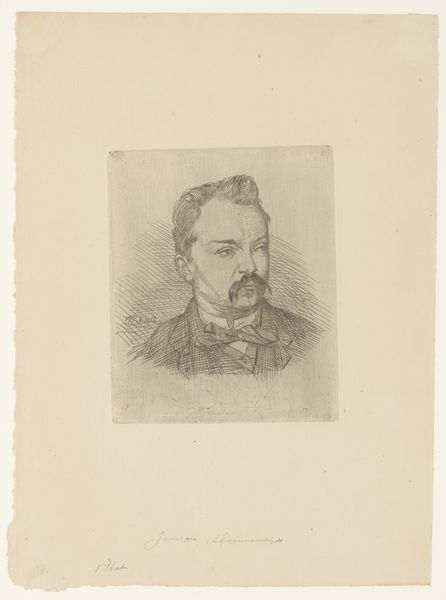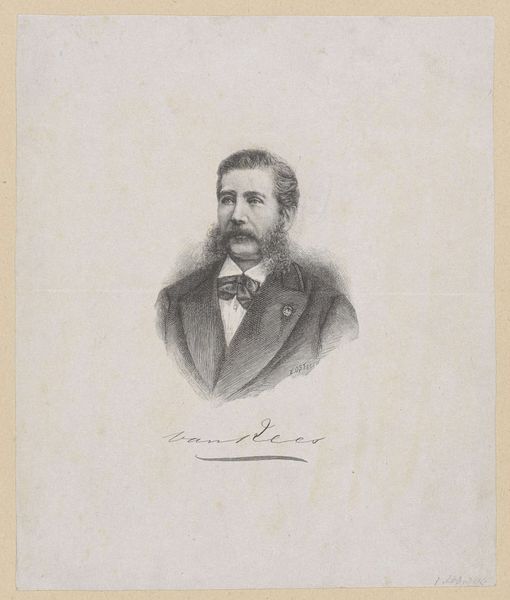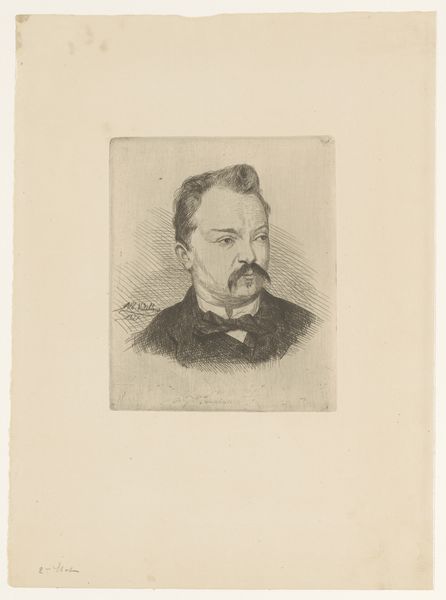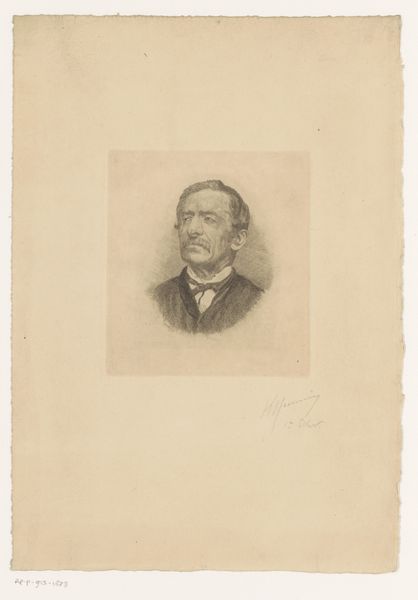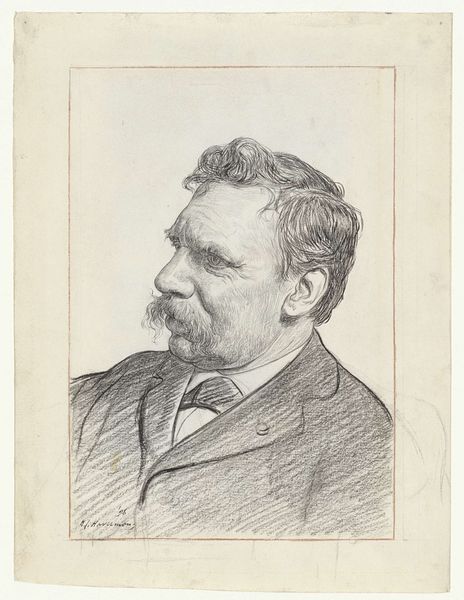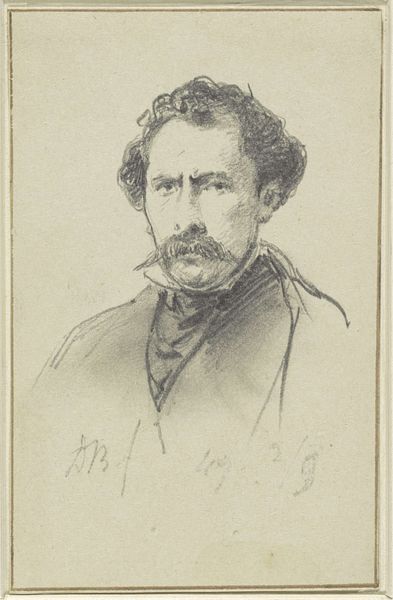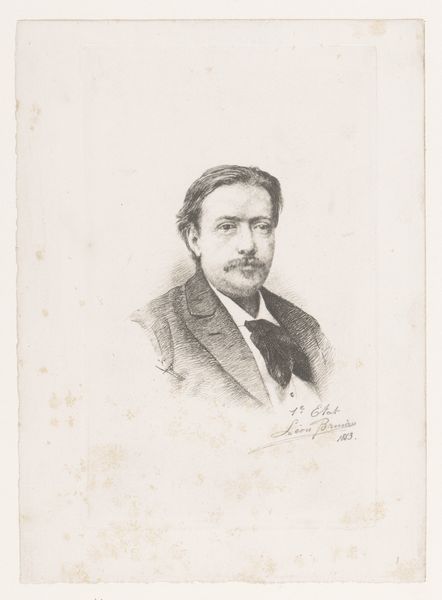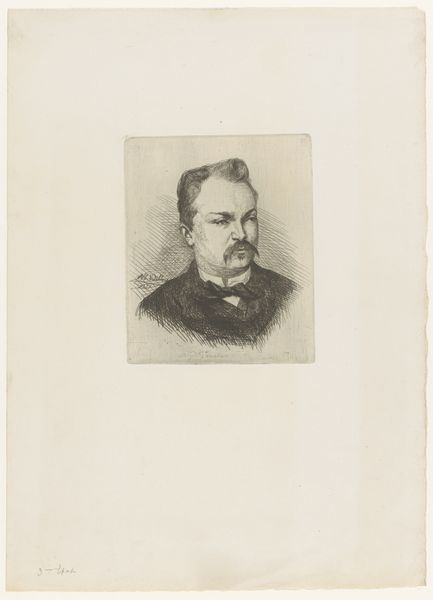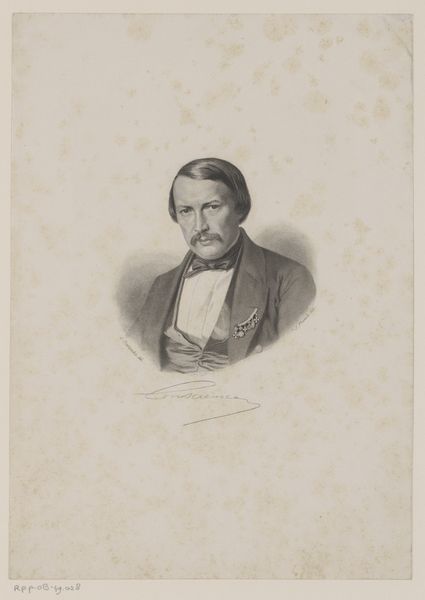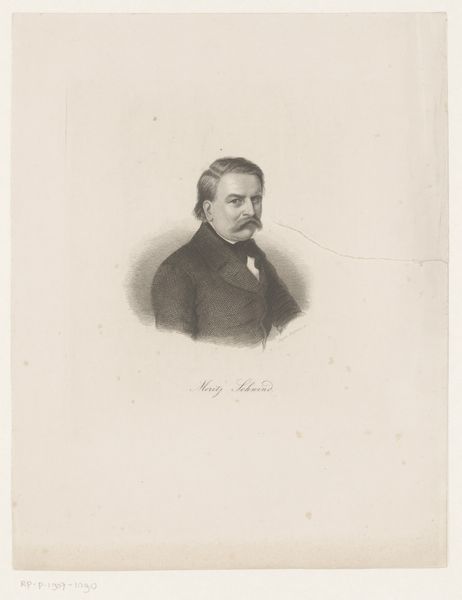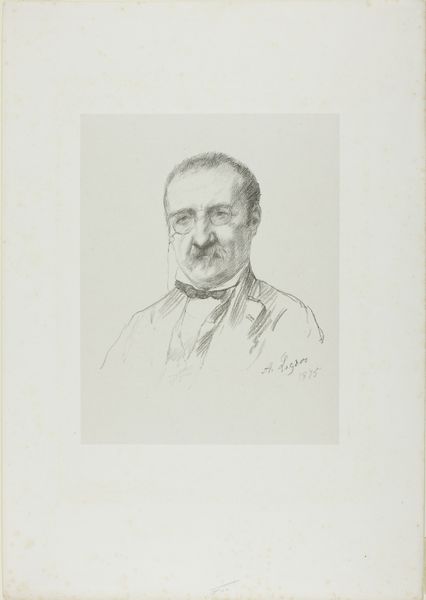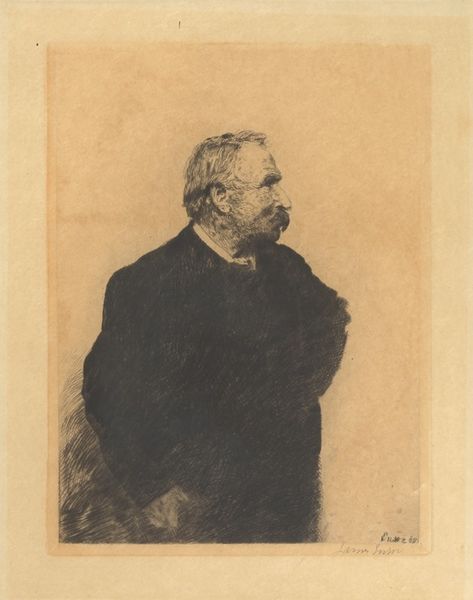
drawing, pencil
#
portrait
#
drawing
#
pencil drawing
#
romanticism
#
pencil
#
portrait drawing
#
history-painting
Dimensions: Sheet: 6 × 5 7/8 in. (15.3 × 15 cm)
Copyright: Public Domain
Editor: This is Christen Købke's "Portrait of Christophe Louis Engelhard Dalgas," made in 1840 using pencil. It's surprisingly delicate for a portrait of a military figure. I'm curious, what strikes you about this drawing? Curator: Immediately, I’m drawn to the materials: pencil on paper. It’s not just a choice; it’s a deliberate constraint. Consider the social context. In 1840, the rise of industrial pencil production made drawing more accessible, moving artistic creation away from reliance on precious metals and into more hands, like maybe even this Dalgas. What does this shift in the means of production signify for the professional artist like Købke? Editor: So, the accessibility of the pencil democratized art-making in a way? Did this pose a challenge to established artists? Curator: Precisely. The availability of cheaper materials redefines what constitutes "art." No longer defined strictly by medium, perhaps artistic skill became defined by artistic representation? Consider the labor involved – the artist’s time, skill, the physical act of mark-making, versus the relative low cost of the tools themselves. This challenges traditional hierarchies, questioning what truly gives a work value. Editor: I never thought about the pencil itself influencing the value of the artwork. Curator: And what about the sitter himself, Engelhard Dalgas? The manufacture of military distinction itself; how is that process itself reflected in Köbke's artistic manufacture of the subject's image? Where might his place have been within that economic system? Editor: So, viewing this drawing through a materialist lens really opens up discussions about production, consumption, and even social status beyond just the aesthetic value. Curator: Absolutely! It invites us to reconsider how art objects participate in, and reflect, the larger economic and social fabric. It causes us to see how materials inform the context and creation, to truly dig deep.
Comments
No comments
Be the first to comment and join the conversation on the ultimate creative platform.
